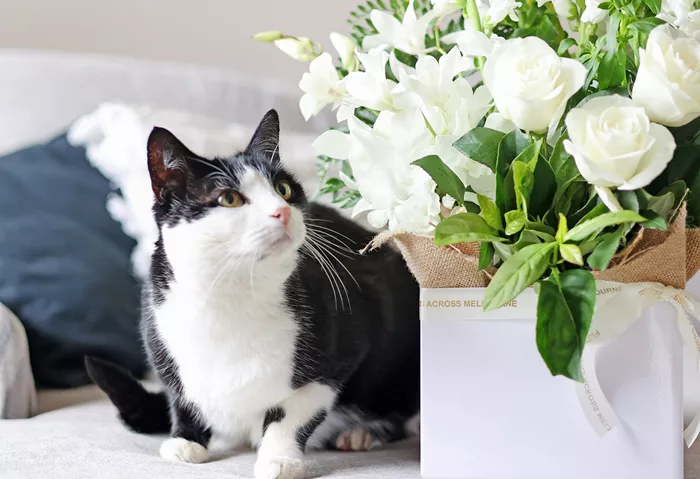Valentine’s Day is fast approaching. Celebrations often include flowers. However, some popular Valentine’s Day flowers can be dangerous for pets1. If your loved one has a cat or dog, be careful which blooms you choose.
Dave Leicester, head of telehealth at Vets Now, advises being extra cautious when displaying flowers at home. Pets are naturally curious. Keep bouquets and plants out of their reach. The safest option is to avoid harmful plants altogether when ordering flowers.
Here are some flowers to avoid, according to Sean McCormack:
Carnations: These are mildly toxic to dogs. It’s best to avoid them, as they can cause vomiting and diarrhea if eaten.
Lilies: Lilies are toxic to both cats and dogs. Eating them can be fatal. They can cause vomiting, diarrhea, a slowed heart rate, seizures, and kidney failure. Even brushing against them and licking the pollen can be dangerous.
Daffodils: Daffodil bulbs are especially toxic to dogs. Eating them can cause abdominal pain, low blood pressure, an irregular heartbeat, and diarrhea.
Tulips: Tulips are moderately toxic to dogs. The bulbs contain tulipalin A and B, which can irritate a dog’s stomach. Symptoms include excessive drooling, tremors, breathing difficulties, and vomiting.
Roses: Roses aren’t toxic, but thorns can cause injuries and internal blockages if swallowed. They can also lead to infections if injuries aren’t treated. Remove the thorns before gifting roses to pet owners.
McCormack suggests safer alternatives, such as Chinese money plants, rattlesnake plants, spider plants, orchids, and fishbone cacti. Always research pet-safe plants when buying gifts for pet owners. This ensures the safety of their animals and shows extra thoughtfulness.
Consider pet-friendly options like roses, lavender, sunflowers, and orchids. Even non-toxic plants can cause stomach upset if eaten in large quantities. Contact a vet if you’re concerned about what your dog has eaten. You can also check the ASPCA’s list of toxic and non-toxic plants.


